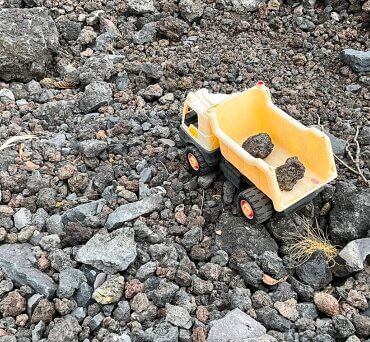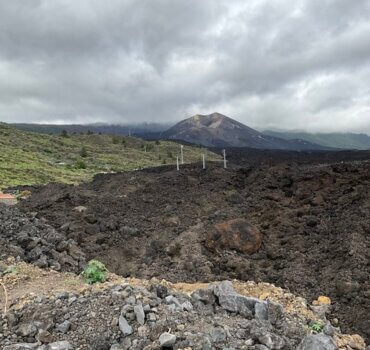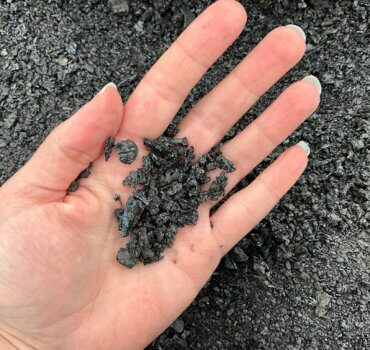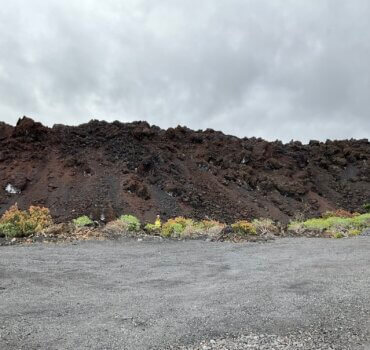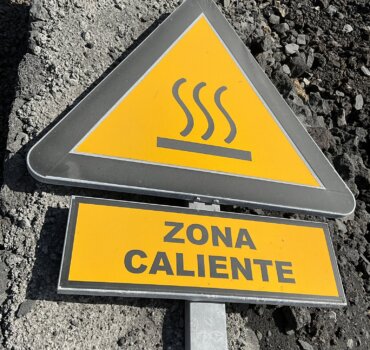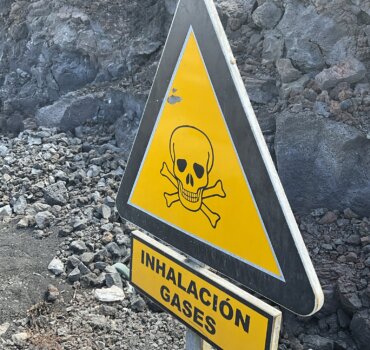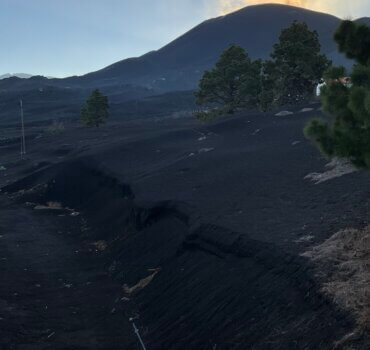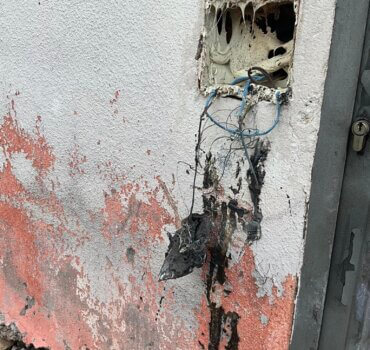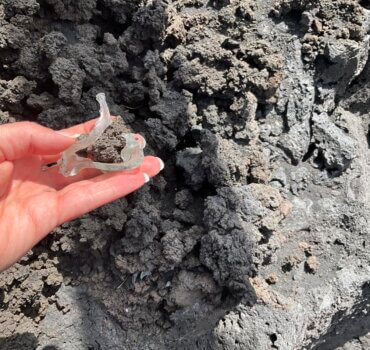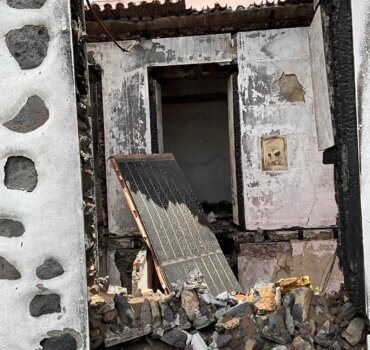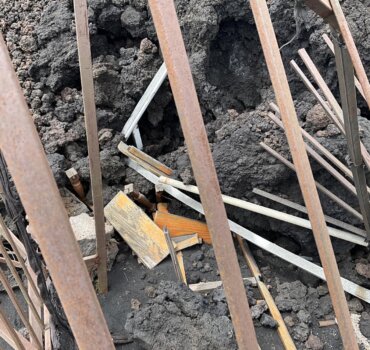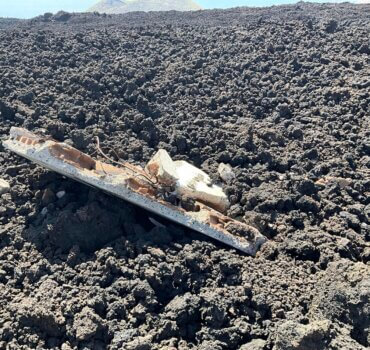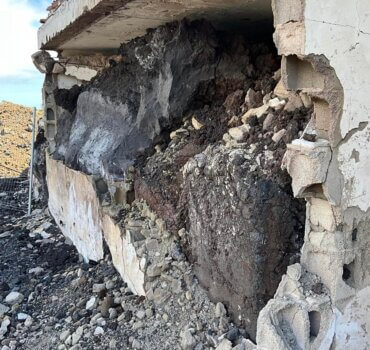Our regular columnist Janine Krippner reports from the Cumbre Vieja volcanic ridge on the island of La Palma in Canary Islands.
In the past four days I have seen more destruction and loss than across all my life combined.
Walking across sharp, rubbly lava flows, stepping over debris from houses. Seeing an entire three-storey house reduced to about one metre thick below solid rock. Coming across a little yellow toy dump truck with rocks in the back, located where lava has been cleared to provide access to what houses are still standing. Roofs collapsed. Walls collapsed. Living rooms filled with lava. The smell of burned homes. I have passed warning signs about volcanic gases and hot surfaces. I have quickly dropped a chunk of rock that was still too hot to hold. It will take years for these lava flows to cool in places. “It was so beautiful here” a local tells us.
Back in late 2021 after days of seismicity shaking the ground, there were cheers when a small ash plume shot into the sky. The eruption had started. They had some certainty about what was happening and where. Hearing this recollection brought over a wave of emotion, at that moment they had no idea what was to come. The new vent had opened far up on a mountainside, and these volcanoes tend to produce lava flows. Molten rock over 1000 degrees, metres thick, that flows all the way to the ocean. Between the new vent and the coastline were well over 1000 homes that would be lost over the next three months. People had 15 minutes to grab as much of their lives as they could and run, some of these people woken in the night for this gruelling but rapid process of taking what they could think of in a state of total crisis. Some had an opportunity to go back for more while others already had nothing to go back to.
Out in the field documenting damage I keep thinking “this could be Auckland, what can we learn from this that could help other people?” As I write this with my morning coffee the new cone is not far away, and I am looking out over the landscape transformed by lava flows up to 70 m thick, and volcanic ash that had also covered the property I am in. During the eruption, the military worked tirelessly to clear this heavy ash from roofs to try to save them from collapse. This was an enormous effort to help communities around the volcano in an intensely stressful and ever-changing situation. Now the volcano continued to release gases from the cooling magma, but all is quiet, except for the many people who are still working to put their lives back together. There will be more eruptions like this around the world. We don’t know where or when; we just know we need to learn about each one to help people in the future and move forward with compassion and care for the long term struggles involved with a crisis of this scale.




